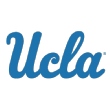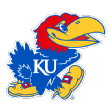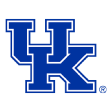Louisville is far from the first blue-chip basketball program to get into trouble, though the Cardinals do possess the added distinction of being investigated by no less an authority than the federal government. Who knows, maybe that extra level of scrutiny and magnitude will make all the difference and the program will be crippled indefinitely or even discontinued entirely.
Then again, other top programs have found themselves in serious trouble only to live to tell the tale. Indeed, UCLA, Kansas, Kentucky and Indiana have all run afoul of the rules in the game's modern era. (To say nothing of the Wildcats' brush with point-shaving in the 1950s.)
What do these precedents say about Louisville's future? They say that, absent some sort of federal interdiction or NCAA death penalty, the Cardinals could be back sooner rather than later.
Here's a quick review of what happened at other programs:
In 1981, the long-rumored (and occasionally documented) activities of booster Sam Gilbert finally caught up with the Bruins basketball program. The NCAA hit UCLA with two years of probation, imposed a one-season NCAA tournament ban and forced the program to vacate its run to the 1980 national championship game. The Bruins' coach at the time, Larry Brown, jumped to the NBA as head coach of the New Jersey Nets.
Scandal hit: 1981
Next coach: Larry Farmer
Next NCAA tournament: 1983
Aftermath: In the mid-1980s, UCLA missed three consecutive NCAA tournaments for the first time since 1961. Though the Bruins didn't get back to a Sweet 16 until 1990 under Jim Harrick, the coach subsequently took UCLA to a national title in 1995. The following year, Harrick was fired for lying on an expense report related to a dinner with twin recruits Jason and Jarron Collins.
Just seven months after winning the 1988 national championship, the Jayhawks became the first team in NCAA tournament history to be barred from defending its title. That fall, the NCAA imposed a one-year postseason ban on KU to go along with three years of probation. The penalties were levied in response to recruiting violations related to a potential transfer (who never played in Lawrence), later identified as Vincent Askew. In its ruling, the NCAA pointedly noted that it had seriously considered shutting down the Kansas basketball program entirely for the 1988-89 season. The Jayhawks' coach at the time, Larry Brown, jumped to the NBA as head coach of the San Antonio Spurs.
Scandal hit: 1988
Next coach: Roy Williams
Next NCAA tournament: 1990
Aftermath: Few programs have recovered from a postseason ban as quickly as Kansas did under Williams, who had never previously served as a head coach. During his first season, the Jayhawks were ranked as high as No. 16 in the AP poll and finished 19-12. The following season, KU posted a 30-5 record and earned a No. 2 seed in the 1990 NCAA tournament. During his 15-year tenure in Lawrence, Williams won nine conference titles and led Kansas to four Final Fours.
Rumors started to swirl around the Wildcats program in 1988, when a package from an assistant coach addressed to recruit Chris Mills came open in transit and was found to contain $1,000 in cash. The school was hit with an NCAA notice of allegations that October, leading to the resignation of Cliff Hagan as athletic director in November. Head coach Eddie Sutton resigned the following March, after UK had recorded a 13-19 season. Then, on May 19, 1989, the NCAA put Kentucky on a three-year probation, which included a two-year postseason ban. In addition, Eric Manuel was barred from further NCAA competition and Mills was prohibited from playing for the Wildcats.
Scandal hit: 1989
Next coach: Rick Pitino
Next NCAA tournament: 1992
Aftermath: UK went 14-14 under Pitino in 1989-90, marking the last time the program has failed to finish over .500 in a regular season. The program quickly rebounded. In its first NCAA tournament appearance under Pitino, UK reached the 1992 Elite Eight, only to lose a rather famous game to Duke and Christian Laettner. Kentucky went on to win two championships and play in three consecutive national title games from 1996 to 1998, the last of those under Tubby Smith.
When Kelvin Sampson was hired by the Hoosiers in 2006, he already was being investigated by the NCAA due to recruiting violations committed while he was head coach at Oklahoma (the sanctions for which hadn't officially been imposed yet). That history replayed itself in Bloomington. Sampson stepped down as the IU head coach in February 2008. And that November, the NCAA hit Indiana with three years of probation as punishment for more than 100 impermissible phone calls made to recruits by Sampson and his staff during his first season with the Hoosiers. Sampson was personally subjected to a five-year show-cause penalty.
Scandal hit: 2008
Next coach: Tom Crean
Next NCAA tournament: 2012
Aftermath: Not many blue-chip programs have ever been laid low in terms of roster strength the way Indiana was in 2008-09. That season, the Hoosiers went 6-25 overall and 1-17 in Big Ten play. Nevertheless, IU effectively declared it was back in business as early as the fall of 2010, when Crean won a fierce recruiting battle against the likes of Butler head coach Brad Stevens and North Carolina's Roy Williams and signed in-state prospect Cody Zeller. One year later, Indiana won a game for the ages against eventual national champion Kentucky; it was the same season in which the Hoosiers reached the first of three Sweet 16s under Crean.
These prior examples suggest that once the dust settles, Louisville could well attract a top coach who might return the team to elite status in relatively short order. Blue-chip programs have repeatedly demonstrated remarkable recuperative powers.




